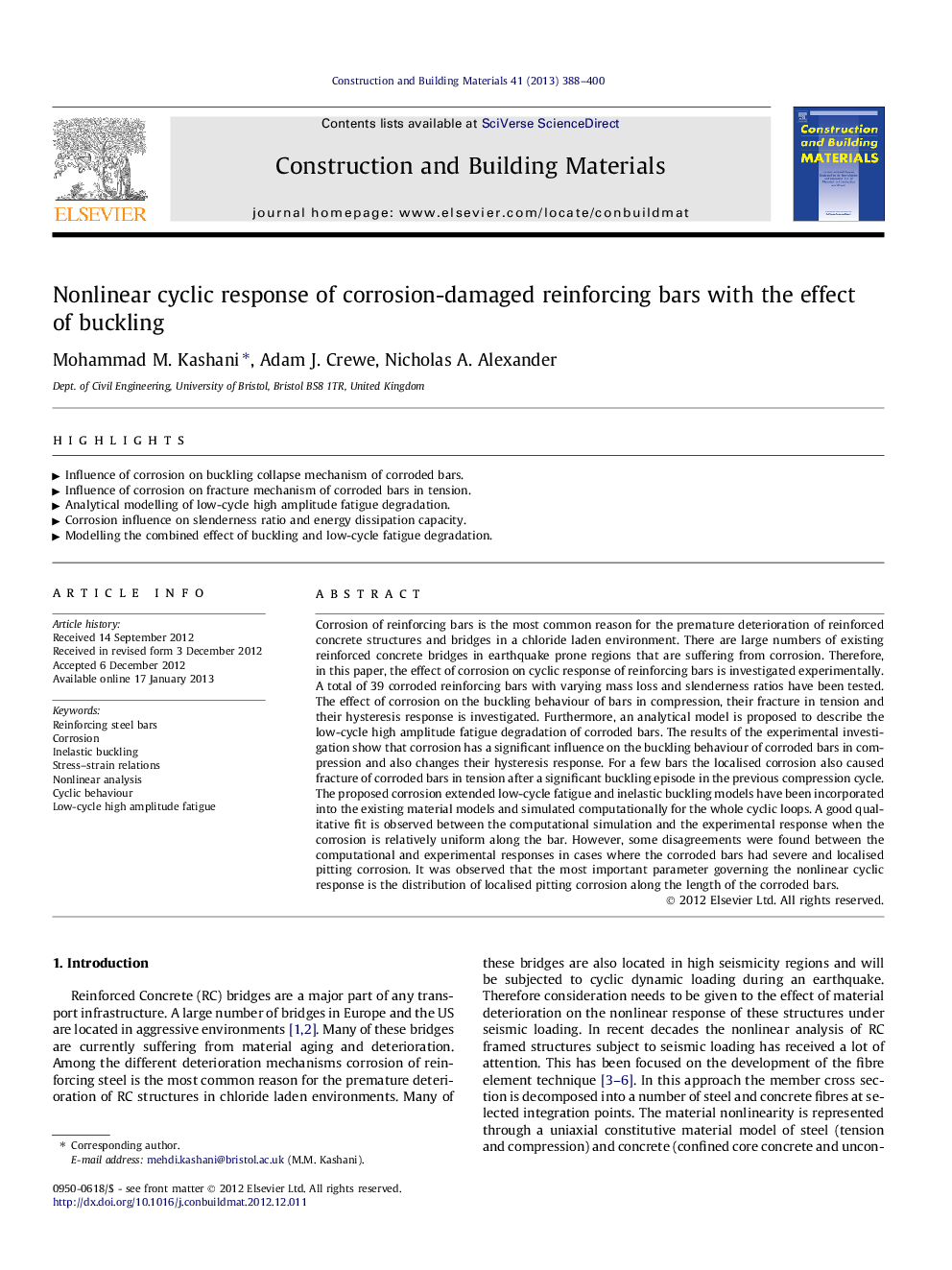| Article ID | Journal | Published Year | Pages | File Type |
|---|---|---|---|---|
| 258409 | Construction and Building Materials | 2013 | 13 Pages |
Corrosion of reinforcing bars is the most common reason for the premature deterioration of reinforced concrete structures and bridges in a chloride laden environment. There are large numbers of existing reinforced concrete bridges in earthquake prone regions that are suffering from corrosion. Therefore, in this paper, the effect of corrosion on cyclic response of reinforcing bars is investigated experimentally. A total of 39 corroded reinforcing bars with varying mass loss and slenderness ratios have been tested. The effect of corrosion on the buckling behaviour of bars in compression, their fracture in tension and their hysteresis response is investigated. Furthermore, an analytical model is proposed to describe the low-cycle high amplitude fatigue degradation of corroded bars. The results of the experimental investigation show that corrosion has a significant influence on the buckling behaviour of corroded bars in compression and also changes their hysteresis response. For a few bars the localised corrosion also caused fracture of corroded bars in tension after a significant buckling episode in the previous compression cycle. The proposed corrosion extended low-cycle fatigue and inelastic buckling models have been incorporated into the existing material models and simulated computationally for the whole cyclic loops. A good qualitative fit is observed between the computational simulation and the experimental response when the corrosion is relatively uniform along the bar. However, some disagreements were found between the computational and experimental responses in cases where the corroded bars had severe and localised pitting corrosion. It was observed that the most important parameter governing the nonlinear cyclic response is the distribution of localised pitting corrosion along the length of the corroded bars.
► Influence of corrosion on buckling collapse mechanism of corroded bars. ► Influence of corrosion on fracture mechanism of corroded bars in tension. ► Analytical modelling of low-cycle high amplitude fatigue degradation. ► Corrosion influence on slenderness ratio and energy dissipation capacity. ► Modelling the combined effect of buckling and low-cycle fatigue degradation.
